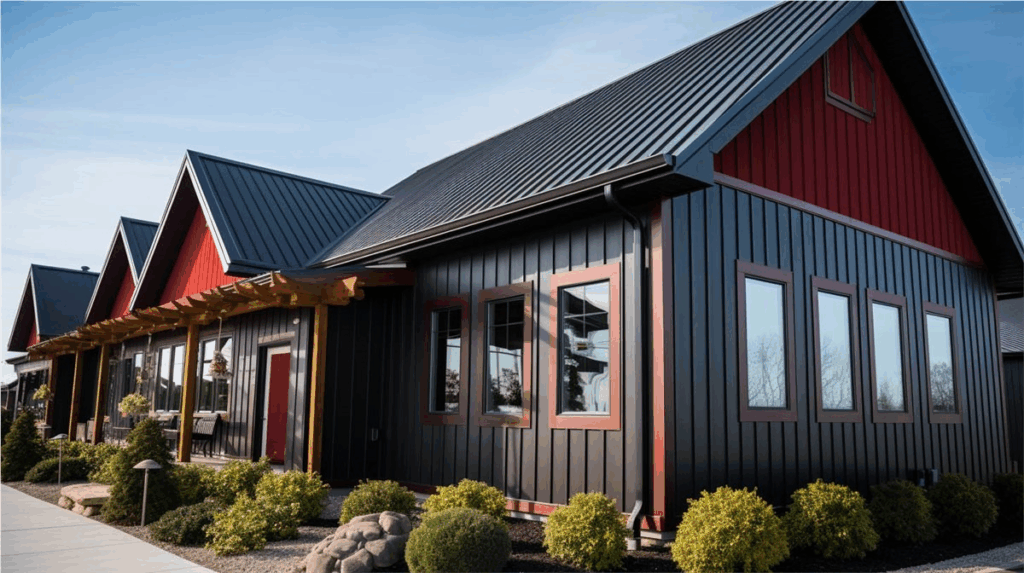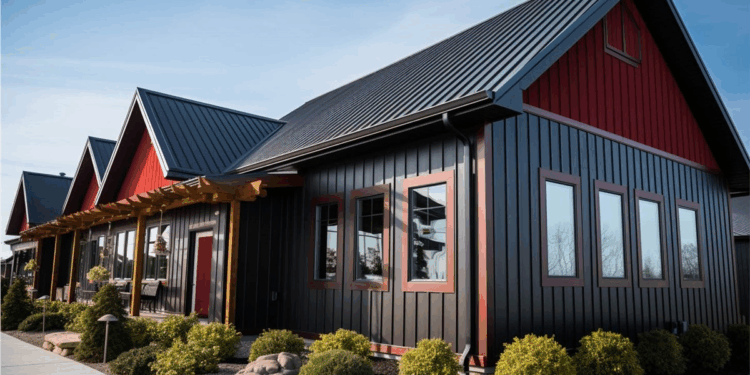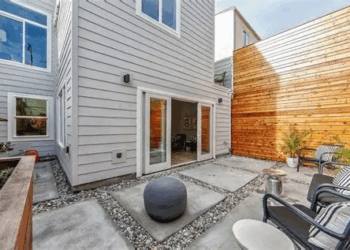
Embarking on the journey of siding replacement, this guide aims to provide valuable insights and information to homeowners looking to enhance their property’s aesthetics and value. From the importance of timely replacement to the different types of siding materials available, this comprehensive overview covers it all.
Importance of Siding Replacement
Ensuring your home’s siding is well-maintained and replaced when necessary is crucial for preserving the integrity of your property. Siding serves as a protective barrier against the elements, keeping your home safe from moisture, pests, and other potential damages.
Benefits of Timely Siding Replacement
- Enhanced Curb Appeal: Fresh, new siding can instantly improve the appearance of your home, boosting its curb appeal and making it more attractive to potential buyers.
- Increased Property Value: Upgrading your siding can increase the overall value of your home, making it a worthwhile investment in the long run.
- Improved Energy Efficiency: New siding can improve insulation and energy efficiency, helping to lower heating and cooling costs.
Impact of Old or Damaged Siding
- Deterioration: Old or damaged siding can lead to further deterioration of your home’s structure, causing costly repairs in the future.
- Mold and Mildew Growth: Moisture trapped behind old siding can promote the growth of mold and mildew, posing health risks to occupants.
- Decreased Property Value: Unsightly siding can detract from the overall appearance of your home, potentially lowering its value on the market.
Types of Siding Materials
When considering siding replacement, it is important to explore the various types of siding materials available in the market. Each material comes with its own set of characteristics, durability, maintenance requirements, and cost implications.
Vinyl Siding
Vinyl siding is one of the most popular choices for homeowners due to its affordability and low maintenance requirements. It is durable, resistant to rot and insects, and comes in a wide range of colors and styles. However, vinyl siding may crack or fade over time, especially in extreme weather conditions.
Wood Siding
Wood siding offers a natural and classic look to a home, but it requires more maintenance compared to other materials. Regular painting, staining, and sealing are necessary to protect wood siding from rot, pests, and moisture damage. While wood siding can be more expensive upfront, it adds a timeless charm to the exterior of a home.
Fiber Cement Siding
Fiber cement siding is known for its durability and resistance to fire, insects, and rot. It can mimic the look of wood or masonry without the high maintenance requirements. Fiber cement siding is a bit more expensive than vinyl, but it is a long-lasting and low-maintenance option for homeowners looking for durability and aesthetic appeal.
Metal Siding
Metal siding, such as aluminum or steel, is a strong and durable option that can withstand harsh weather conditions. It is resistant to fire, rot, and pests, making it a low-maintenance choice for homeowners. While metal siding can be more expensive upfront, it provides long-term durability and energy efficiency benefits.
Signs That Replacement is Needed
When it comes to the siding of your home, it’s important to be aware of the signs that indicate it may be time for a replacement. Ignoring these signs can lead to further damage and higher costs down the line.Cracks, warping, or mold growth on your siding are all common indicators that replacement is needed.
Cracks can allow moisture to seep in, causing further damage to the structure of your home. Warping may be a sign of water damage or pest infestation, which can compromise the integrity of your siding. Mold growth not only looks unsightly but can also be a health hazard for you and your family.Weather damage can also accelerate the need for siding replacement.
Exposure to harsh elements like rain, snow, and UV rays can cause wear and tear on your siding over time. If you live in an area prone to extreme weather conditions, it’s especially important to keep an eye out for signs of damage.A professional inspection can help determine if siding replacement is required.
A trained eye can spot subtle signs of damage that may not be immediately obvious to the untrained homeowner. By getting a professional assessment, you can address any issues early on and prevent further damage to your home.
Siding Replacement Process
When it comes to a siding replacement project, there are several important steps that need to be followed to ensure a successful outcome. Proper preparation before installing new siding is crucial to the longevity and effectiveness of the new material.
Let’s delve into the details of the siding replacement process.
Preparation Before Installation
Before installing new siding, it is essential to prepare the exterior of your home properly. This involves removing the old siding, repairing any damaged areas, and ensuring that the surface is clean and smooth. Proper preparation will help the new siding adhere correctly and prevent any issues down the line.
Tools and Techniques
- 1. Siding Removal: Specialized tools such as a siding removal tool or zip tool are essential for safely and efficiently removing the old siding without damaging the underlying structure.
- 2. Surface Preparation: Tools like a pressure washer, caulk gun, and hammer are necessary for cleaning the surface, filling in any gaps, and securing the new siding in place.
- 3. Installation Techniques: Proper technique, such as ensuring correct overlap and alignment, is crucial for a seamless and weather-resistant siding installation. Use a level to ensure the siding is straight and plumb.
- 4. Finishing Touches: Once the siding is installed, finishing touches such as painting or sealing may be required to enhance the appearance and longevity of the siding.
Hiring a Contractor
When it comes to siding replacement, choosing the right contractor is crucial to ensure a successful and stress-free project. Here are some tips on how to select a reputable contractor for your siding replacement needs.
Checking Licenses, Insurance, and References
Before hiring a contractor for siding replacement, it is essential to check if they are licensed and insured. A legitimate contractor should have the necessary licenses to operate in your area and carry insurance to protect you in case of any accidents or damages during the project.
Additionally, asking for references from past clients can give you insight into the contractor’s quality of work and professionalism.
- Verify the contractor’s license and insurance coverage to ensure they are compliant with local regulations and adequately protected.
- Ask for references and take the time to contact previous clients to inquire about their experience working with the contractor.
- Check online reviews and ratings to get a sense of the contractor’s reputation and reliability.
Red Flags to Look Out For
While searching for a contractor, it is important to be aware of potential red flags that may indicate an unreliable or unprofessional service provider.
- Avoid contractors who pressure you to make a quick decision or offer significantly lower prices than other quotes.
- Be cautious of contractors who are hesitant to provide proof of insurance, licenses, or references.
- Stay away from contractors who do not have a physical address or are difficult to reach by phone or email.
Closing Summary
In conclusion, siding replacement is not just a maintenance task but a valuable investment in the longevity and appeal of your home. By understanding the signs, materials, process, and hiring tips Artikeld in this guide, you are well-equipped to make informed decisions for your property.
Helpful Answers
When should I consider siding replacement?
It’s advisable to consider siding replacement when you notice signs of damage like cracks, warping, or mold growth, as these can impact your home’s structural integrity.
How do I choose the right siding material?
The choice of siding material depends on factors like durability, maintenance, and cost. Consider your budget and the climate in your area before making a decision.
What should I look for in a siding replacement contractor?
Look for contractors with proper licenses, insurance, and positive references. Beware of red flags like unusually low prices or lack of transparency.














